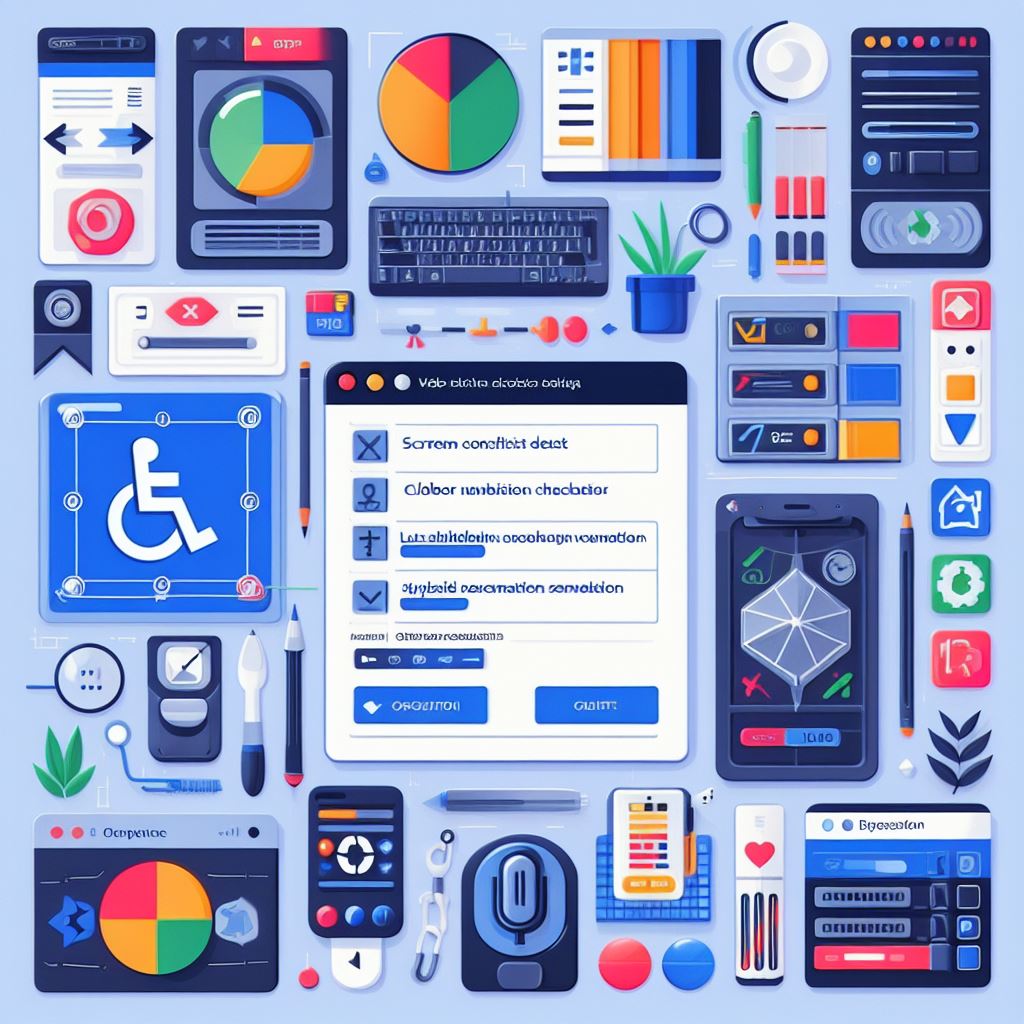
Have you ever visited a website or web application and struggled to navigate or access its content? If so, you’re not alone. For many people with disabilities, using the internet can be a frustrating and difficult experience. But with the help of accessibility testing tools, web developers can ensure that their sites are accessible to everyone.
What are Accessibility Testing Tools?
Accessibility testing tools are software programs that help web developers identify and fix accessibility issues on their websites. These tools scan web pages for elements that may be difficult or impossible for people with disabilities to access, such as images without alternative text, links without descriptive text, or videos without captions.
Some of the most popular accessibility testing tools include:
- axe: “axe is a powerful open-source accessibility testing tool that helps identify and fix web accessibility issues efficiently.”
- Wave: “Wave is a user-friendly web accessibility evaluation tool that provides instant feedback on website accessibility.”
- accessScan – accessiBe’s free web accessibility tool, accessScan automatically audits your website within a matter of seconds, assigning it a score: Complaint, sem-compliant, and non-compliant.
- JAWS: “JAWS (Job Access With Speech) is a renowned screen reader software designed to assist visually impaired users in navigating digital content.”
- NVDA: “NVDA (NonVisual Desktop Access) is a free, open-source screen reader for Windows, enabling people with visual impairments to access digital information.”
- WAVE Chrome Extension: “The WAVE Chrome Extension is a browser extension that offers real-time web accessibility evaluation directly within Google Chrome.”
- Color Contrast Analyzer: “The Color Contrast Analyzer is a tool for assessing the color contrast of web page elements to ensure readability for all users.”
- AChecker: “AChecker is a web-based accessibility evaluation tool that allows users to test the compliance of web content with various accessibility standards.”
- pa11y: “pa11y is an automated accessibility testing tool that can be integrated into development workflows to catch accessibility issues early.”
- Tenon.io: “Tenon.io is a cloud-based accessibility testing platform that provides comprehensive scanning and reporting for web accessibility compliance.”
- SortSite: “SortSite is an all-in-one web testing and monitoring tool that includes accessibility testing features to improve website accessibility.”
Why is Web Accessibility Important?
Web accessibility is important because it ensures that everyone, regardless of ability, can access and interact with online content. This includes people with visual, auditory, physical, or cognitive disabilities. In the United States, web accessibility is also required by law under the Americans with Disabilities Act (ADA).
But accessibility isn’t just a legal requirement – it’s also good for business. By making their websites accessible, companies can reach a wider audience and improve their reputation as a socially responsible and inclusive organization.
How Accessibility Testing Tools Work?
Accessibility testing tools work by scanning web pages for accessibility issues and providing feedback to web developers. This feedback may take the form of visual indicators, such as highlighting elements that need alternative text, or written feedback, such as a list of accessibility issues with suggested fixes.
Some accessibility testing tools also provide accessibility guidelines and best practices to help web developers improve their knowledge of accessibility and ensure that their sites are accessible to the widest possible audience.
Use of Accessibility Testing Tools
Accessibility testing tools are used to identify and fix accessibility issues in websites and applications. These tools can be used by developers, testers, and content creators to ensure that their products are accessible to all users, including those with disabilities.
Accessibility testing tools can be used to test a variety of aspects of a website or application, including:
- Content: This includes checking for things like missing alternative text for images, empty links, and poorly structured HTML.
- Navigation: This includes checking for things like keyboard accessibility, focus indicators, and descriptive link text.
- Color contrast: This includes checking for things like sufficient color contrast between text and background colors.
- Input: This includes checking for things like keyboard accessibility, form validation, and error messages.
Accessibility testing tools can be used manually or automatically. Manual testing involves using the website or application as a user would and looking for any accessibility issues. Automatic testing uses software tools to scan the website or application for accessibility issues.
Both manual and automatic testing are important for ensuring that a website or application is accessible. Manual testing can catch issues that automatic testing may miss, such as issues with the overall user experience. Automatic testing can scan large amounts of content quickly and efficiently.
Tips for Using Accessibility Testing Tools
To get the most out of accessibility testing tools, consider the following tips:
- Use multiple tools: No single accessibility testing tool can catch all accessibility issues. Using multiple tools can help ensure that your site is as accessible as possible.
- Test early and often: Accessibility testing should be integrated into the web development process from the beginning. Testing early and often can help catch accessibility issues before they become entrenched in the site’s code.
- Combine automated and manual testing: Automated accessibility testing tools can catch many accessibility issues, but manual testing is also important for catching more complex issues and ensuring that the site is usable for people with disabilities.
- Keep up to date with accessibility guidelines: Accessibility guidelines and best practices are constantly evolving. Keeping up to date with the latest guidelines can help ensure that your site is as accessible as possible.
Conclusion
Accessibility testing tools are an essential part of creating an inclusive and accessible web. By using these tools, web developers can ensure that their sites are accessible to everyone, regardless of ability. And by making the web more accessible, we can create a more inclusive and equitable online world.
Email- contact@devopsschool.com

 Starting: 1st of Every Month
Starting: 1st of Every Month  +91 8409492687
+91 8409492687  Contact@DevOpsSchool.com
Contact@DevOpsSchool.com
